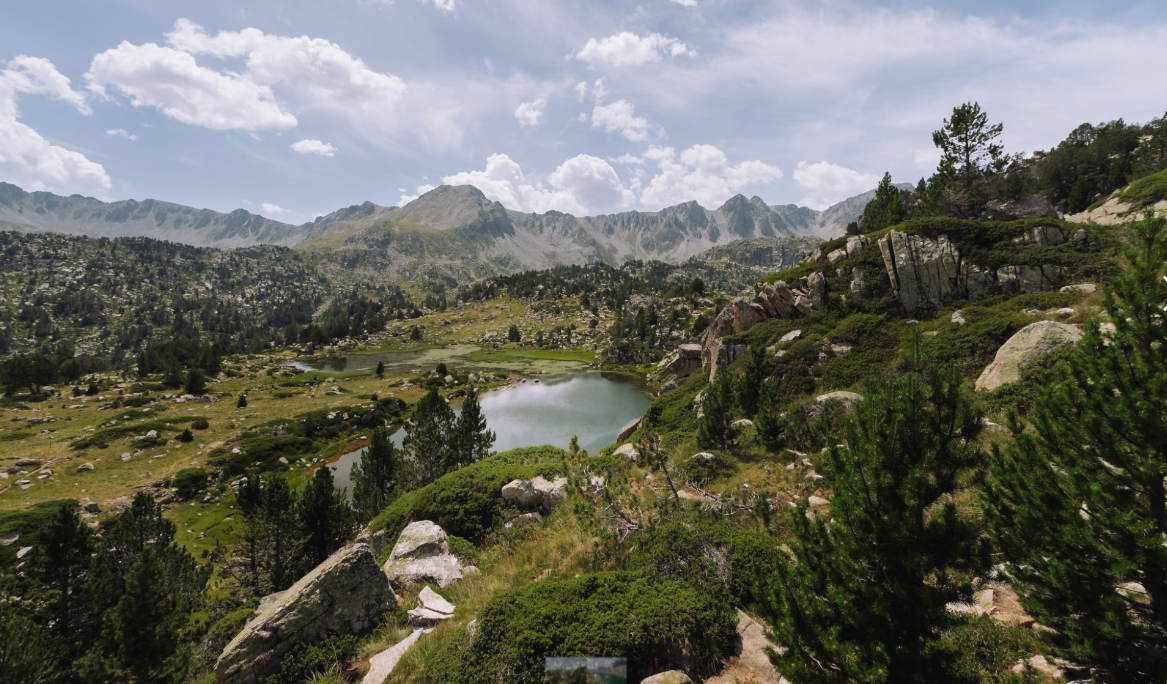The IDEES Journal, published by the Centre for the Study of Contemporary Issues. Department of Institutional and External Affairs and Relations and Transparency, has published a monograph on the 2030 Agenda in which the different types of challenges involved are described. CREAF has led and written the chapter on biodiversity conservation, which is described below.
The monograph “The 2030 Agenda: transforming the world in the face of a planetary emergency” was presented by the Councillor for External Action and Open Government, Victoria Alsina, at a round table in which the scientific coordinator of CREAF, Alicia Pérez-Porro, was also present. The conference entitled ‘Tools and policies for a sustainable transition’, organised by the Centre for the Study of Contemporary Issues. The event and the monograph were promoted jointly with the Advisory Council for Sustainable Development and the ESADE Chair in Leadership.
In her speech, Alicia Pérez-Porro underscored the seriousness of biodiversity loss, which is behind many of the crises the planet is suffering. “All the crises are connected and we have to face them together. Biodiversity loss and climate change are two sides of the same coin,” she said.
Biodiversity: time for action?
(Extract from the text published in the monograph)
IDEAS magazine articles can be consulted online. If you are interested in receiving the dossier in hard copy, please send an e-mail with your name, surname and postal address to cetc.exteriors@gencat.cat.

The evidence is irrefutable: we are losing biodiversity. During recent decades (between 2002 and 2019), the abundance in the number of specimens of a long list of critical animal species that make up Catalonia’s own particular Living Planet Index has decreased by 25% on average — Brotons, L.; Pou, N.; Herrando, S.; Bota, G.; Villero, D.; Garrabou, J.; Ordóñez, J. L.; Anton, M.; Gual, G.; Recoder, L.; Alcaraz, J.; Pla, M.; Sainz de la Maza, P.; Pont, S. and Pino, J. (2020) The State of Nature in Catalonia 2020. Ministry for Territory and Sustainability. Government of Catalonia. Barcelona.. We could be forgiven for thinking that our level of biodiversity loss is relatively moderate compared to the figure for the planet as a whole (68% — WWF (2020) Living Planet Report 2020. Bending the curve of biodiversity loss. Almond, R.E.A., Grooten M. and Petersen, T. (Eds). WWF, Gland, Switzerland.), but it is important to remember that this last figure reflects a much more extended period of time and that the rates of loss per unit of time are actually quite similar.

We need to mainstream biodiversity loss just as we have succeeded in mainstreaming climate change.
ALICIA PÉREZ-PORRO, coordinadora científica del CREAF
Biodiversity in crisis
Specimen loss is affecting the different natural systems disproportionately. It is especially noticeable in aquatic environments (rivers, lakes, marshlands; 54%), and land environments with more open vegetation (crops, pastures and meadows, 34%). The data available for marine environments also points to unfavourable conditions. By contrast, the decrease in forests and scrubland is far less exaggerated (12%). In addition, biodiversity loss isn’t affecting all organisms equally: the more generalist ones with broader ecological requirements remain stable, while the specialist ones that live in specific habitats or have specific ecological requirements are generally experiencing a more pronounced regression. The data show the effect of what’s known as biotic homogenisation; a phenomenon that goes hand-in-hand with biodiversity loss, whereby the world’s species composition becomes increasingly similar due to the growing dominance of a small set of generalist and cosmopolitan species (which are often invasive) and the rarefaction or extinction of a large number of specialists — McKinney, M.L. (2006) Urbanization as a major cause of biotic homogenization. Biological Conservation, 127, 247–260..
The trends identified for some of the species and habitats of European importance included in the EU Birds and Habitats Directives corroborates this general analysis. The latest six-yearly report presented by Catalonia to the Ministry of Ecological Transition (period 2013-2018;— Government of Catalonia (2019). Six-yearly report on the 2013-2018 results of the Birds Directive (Art. 12) and the Habitats Directive (Art. 17) in Catalonia.), indicates that 59% of the habitats of European importance with available information (more than 90% of the total) have an unfavourable conservation status, and only 22% have a favourable conservation status (the remaining 19% have an unknown conservation status). Again, the habitats that fare worse are those linked to aquatic environments: (riparian forests, inland waters) and the coast.








